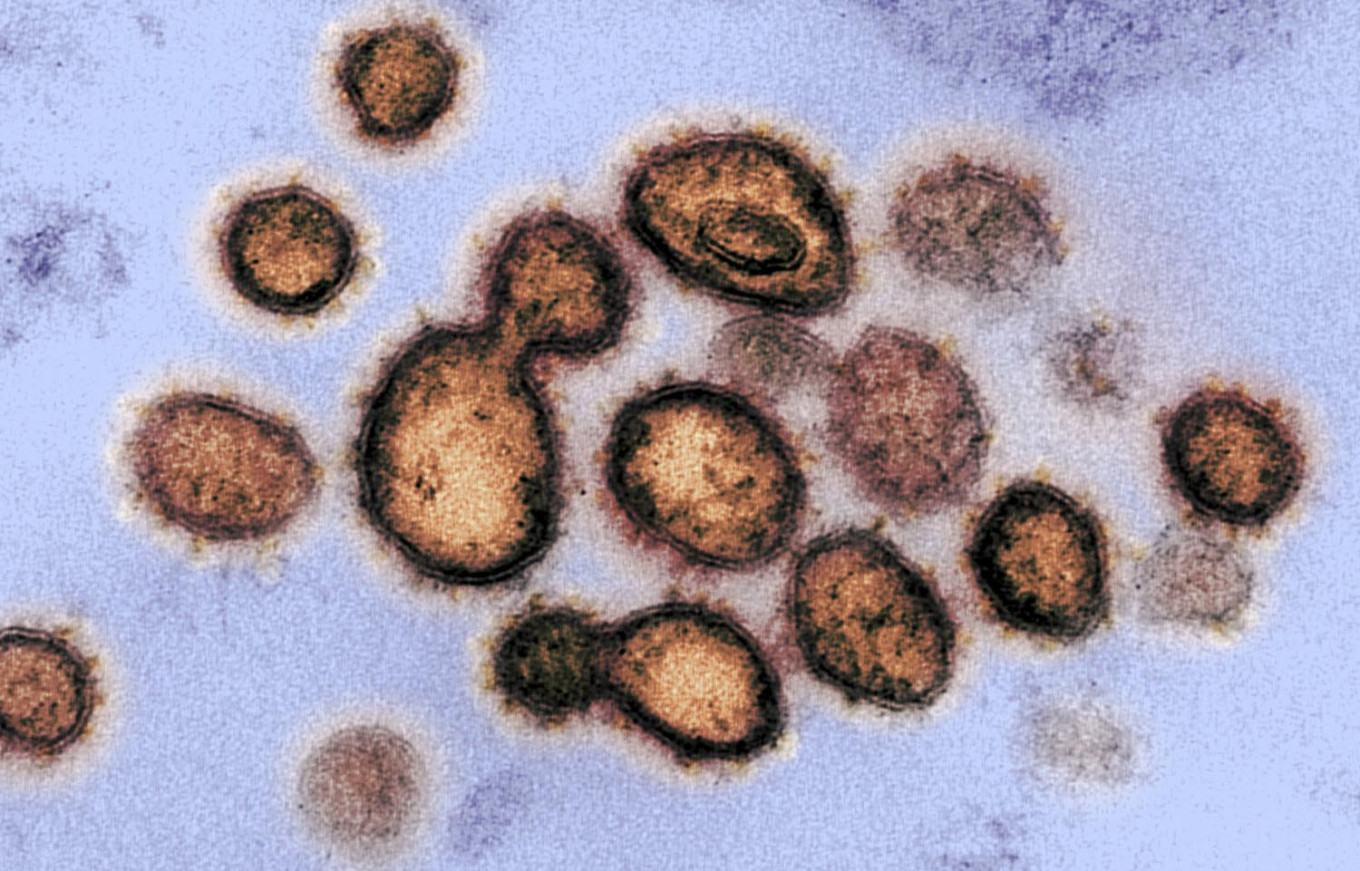Popular Reads
Top Results
Can't find what you're looking for?
View all search resultsPopular Reads
Top Results
Can't find what you're looking for?
View all search resultsCOVID-19 strain in Beijing outbreak may have come from SE Asia: Harvard study
Change text size
Gift Premium Articles
to Anyone
 This handout illustration image obtained Feb. 27, 2020 courtesy of the National Institutes of Health taken with a transmission electron microscope shows SARS-CoV-2, the virus that causes COVID-19, isolated from a patient in the US, as Virus particles are shown emerging from the surface of cells cultured in the lab - the spikes on the outer edge of the virus particles give coronaviruses their name, crown-like.A strain of COVID-19 that has infected more than 300 people in Beijing since early June could have originated in South or Southeast Asia, according to a study by Harvard University researchers. (AFP/Handout / National Institutes of Health)
This handout illustration image obtained Feb. 27, 2020 courtesy of the National Institutes of Health taken with a transmission electron microscope shows SARS-CoV-2, the virus that causes COVID-19, isolated from a patient in the US, as Virus particles are shown emerging from the surface of cells cultured in the lab - the spikes on the outer edge of the virus particles give coronaviruses their name, crown-like.A strain of COVID-19 that has infected more than 300 people in Beijing since early June could have originated in South or Southeast Asia, according to a study by Harvard University researchers. (AFP/Handout / National Institutes of Health)
A
strain of COVID-19 that has infected more than 300 people in Beijing since early June could have originated in South or Southeast Asia, according to a study by Harvard University researchers.
The outbreak in Beijing has raised concerns about China's vulnerability to a "second wave" of infections. The virus found in Beijing cases is an imported strain of COVID-19, according to the China Centre for Disease Control and Prevention.
The Harvard study, published on the preprint website medRxiv.org on Tuesday and which has still to be peer-reviewed, took three of the SARS-CoV-2 genome sequences collected in Beijing last month and compared them to 7,643 samples worldwide.
The three genomes showed the greatest resemblance to cases in Europe from February to May, and to cases in South and Southeast Asia from May to June.
They were also similar to a small number of infections seen in China in March, suggesting the strain could have appeared first in China and then returned to the country three months later, the authors said.
"As the most recent cases in these branches are almost exclusively from South(east) Asia, this could suggest that the new cases in Beijing were re-introduced by transmissions from South(east) Asia," they wrote.
The outbreak traced to Beijing's huge Xinfadi wholesale market on June 11 had infected 329 people by the end of Wednesday.
Quarantine restrictions and large-scale testing of residents began soon after the first cases were identified, and China also required all shipments of imported meat to be tested for COVID-19 before they could leave its ports.
The SARS-CoV-2 virus was believed to have originated in a market in the central Chinese city of Wuhan in December last year and has now infected more than 10 million people and killed more than 500,000 worldwide.
However, some studies suggest it could have been circulating much earlier after crossing the species barrier from horseshoe bats native not only to southwest China, but also Laos and Myanmar.









